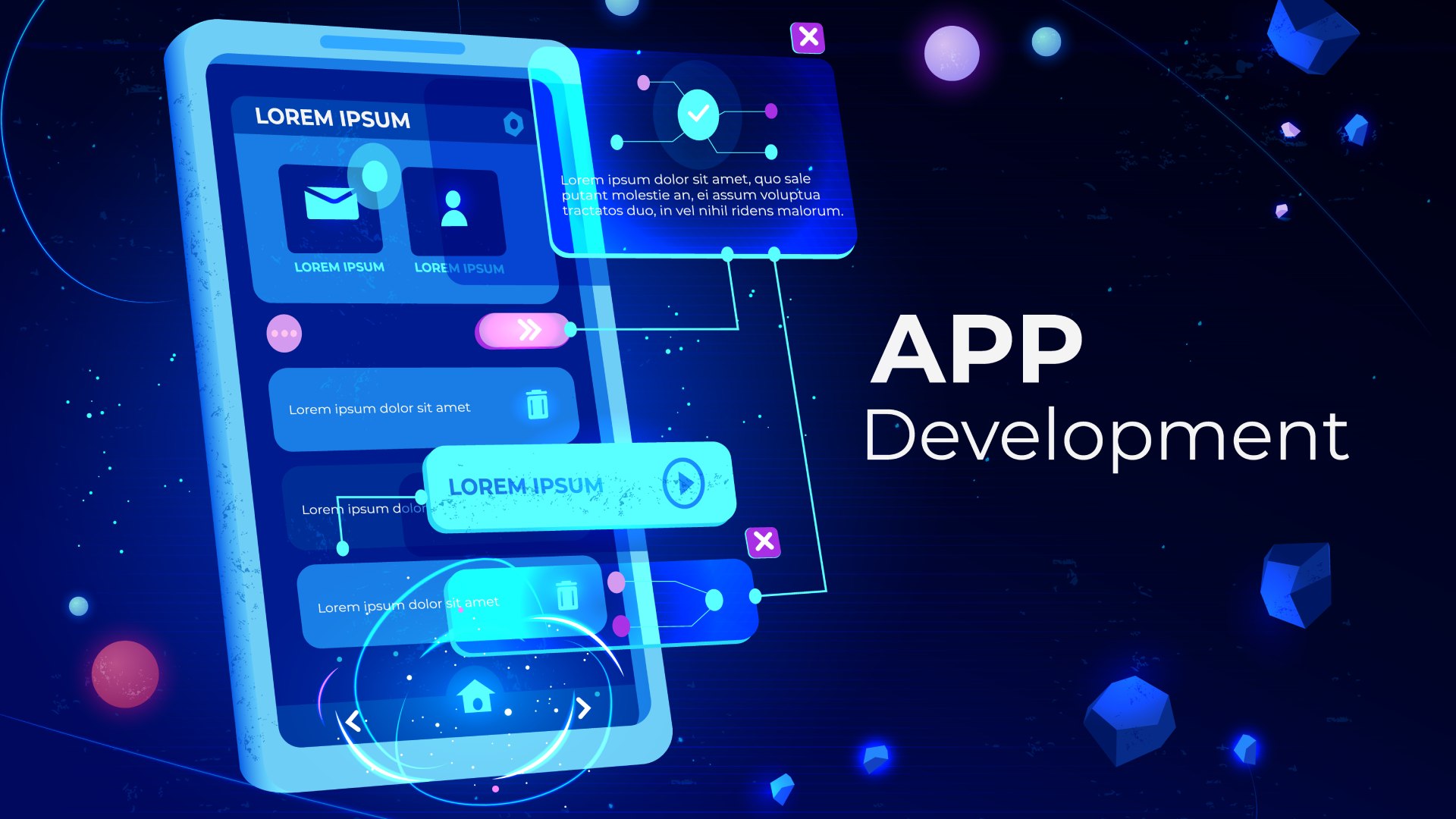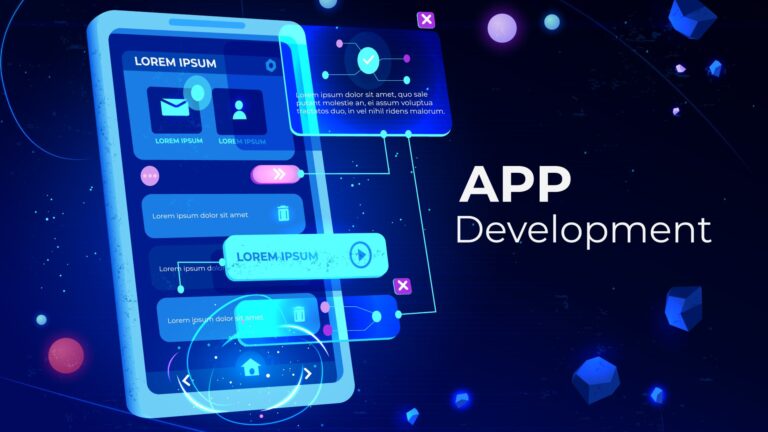Introduction: Why Mobile App Development Is the Future
In today’s digital age, mobile apps have become essential for businesses, entrepreneurs, and even content creators. With billions of smartphone users worldwide, investing time in learning mobile app development opens the door to unlimited opportunities. Whether you dream of building the next big social media platform or want to create small utility apps, mobile development skills are in high demand.
If you’re wondering how to start mobile app development as a beginner, this complete guide is your perfect first step. We’ll walk you through everything — from choosing the right tools to building and launching your first app.
1. Understanding Mobile App Development: What It Really Means
Mobile app development is the process of creating applications that run on mobile devices like smartphones and tablets. It involves designing, coding, testing, and launching an app on platforms like Android and iOS.
Mobile apps are built primarily using:
Native technologies (like Java/Kotlin for Android or Swift for iOS)
Cross-platform frameworks (like Flutter, React Native, or Xamarin)
Learning mobile app development for beginners involves understanding different platforms, programming languages, and frameworks.
2. Choosing the Right Platform: Android vs iOS
One of the first decisions when starting mobile app development is selecting a platform:
Android Development (using Java/Kotlin)
iOS Development (using Swift/Objective-C)
Android has a larger market share globally, while iOS apps often generate higher revenue, especially in the US and Europe.
Tip: As a beginner, starting with Android is recommended because the tools (like Android Studio) are free and the approval process for publishing apps is simpler compared to Apple’s App Store.
3. Picking the Right Programming Language
Here’s a quick list of programming languages you’ll encounter in mobile app development:
Java: Traditional language for Android apps.
Kotlin: Modern and recommended by Google for Android development.
Swift: Standard for iOS app development.
Dart: Used for Flutter development (cross-platform).
JavaScript: For cross-platform apps with React Native.
Keyword tip: Always match your project type with the correct programming language for smooth mobile development.
4. Essential Mobile App Development Tools and Software
To become a successful mobile app developer, you need to familiarize yourself with essential development tools:
For Android:
Android Studio: Official IDE for Android app development.
Kotlin and Java: Main programming languages.
Firebase: Backend services like authentication, database, cloud functions.
For iOS:
Xcode: IDE for iOS app development.
Swift: Preferred language.
TestFlight: For beta testing apps before publishing.
For Cross-Platform Apps:
Flutter: Google’s UI toolkit for crafting natively compiled applications.
React Native: Developed by Facebook, it allows building apps using JavaScript.
Choosing the right mobile app development tools at the start will save you tons of time later.
5. Learning App Design: Basics of UI/UX for Mobile Apps
A good mobile app isn’t just about coding — mobile app design is equally critical!
UI (User Interface) is how your app looks.
UX (User Experience) is how your app feels.
Best practices for mobile app UI/UX:
Keep it simple.
Focus on user needs.
Use common mobile gestures (like swipe, pinch, tap).
Optimize for fast loading and minimal distractions.
Tools like Figma, Adobe XD, and Sketch can help you create beautiful mobile app designs even before you start coding.
6. Roadmap: Step-by-Step Mobile App Development Process
Here’s a beginner-friendly roadmap to your first mobile app:
Define Your App Idea — What problem will your app solve?
Market Research — Check if similar apps exist and find ways to improve.
Wireframing — Sketch basic app screens (you can use tools like Figma).
Choose a Platform — Android, iOS, or both (cross-platform).
Select Tools — Android Studio, Xcode, Flutter, React Native, etc.
Start Coding — Build frontend screens and backend functionalities.
Test Your App — Use emulators and real devices.
Fix Bugs — Debugging is crucial in mobile app development.
Launch Your App — Google Play Store or Apple App Store.
Collect Feedback and Update — Keep improving based on user feedback.
Following this mobile app development guide step-by-step increases your chances of success.
7. Common Mistakes Beginners Should Avoid
When starting app development for beginners, it’s easy to make mistakes like:
Skipping the planning phase.
Choosing the wrong development tools.
Ignoring app performance and speed.
Not testing enough before launch.
Neglecting mobile app design and user experience.
Understanding these pitfalls early can dramatically speed up your learning curve.
8. Cross-Platform vs Native Development: What’s Better for Beginners?
Cross-platform development means writing code once and running it on both Android and iOS (using Flutter, React Native).
Native development means writing different codes for Android (Kotlin/Java) and iOS (Swift).
Cross-platform is beginner-friendly because:
Faster development cycle.
Easier maintenance.
Less costly.
However, native apps usually offer better performance and smoother integration with device hardware.
9. How Much Time Does It Take to Learn Mobile App Development?
On average, it takes:
3-6 months to learn basic mobile app development.
6-12 months to become intermediate.
12+ months to master and create complex apps.
Consistency is key. Even spending 1-2 focused hours daily on learning mobile development will yield incredible results over time.
10. Monetizing Your Mobile Apps: How to Make Money
Once you have an app ready, how do you earn from it?
Top monetization methods include:
In-app ads (Google AdMob)
In-app purchases (extra features, coins, etc.)
Paid apps (one-time download fee)
Subscriptions (monthly or yearly plans)
Sponsorships and partnerships
Learning not just how to start mobile app development but also how to earn from it is vital if you want a full-time career in app development.
11. Top Resources to Learn Mobile App Development for Free
Some popular resources include:
Google Android Developer Guides
Apple Developer Documentation
Flutter Dev Documentation
freeCodeCamp
Coursera (Mobile App Development Courses)
YouTube Tutorials for Android, iOS, Flutter
Tip: Combine video tutorials, written guides, and real project building for faster skill acquisition.
12. Future Trends in Mobile App Development
Stay updated with these trends shaping the future of mobile apps:
AI and Machine Learning integration.
Augmented Reality (AR) and Virtual Reality (VR) apps.
5G-enabled apps for faster services.
Blockchain and decentralized apps.
Progressive Web Apps (PWAs) for mobile web access.
Keeping an eye on these trends will make you a future-proof mobile app developer.
Conclusion: Start Your Mobile App Development Journey Today!
If you’ve been wondering how to start mobile app development, now you have a clear path. Learn the fundamentals, choose the right tools, avoid beginner mistakes, and start building your first app today.
Remember, every expert developer once started exactly where you are now — the difference is they kept building, kept learning, and never gave up.
At CodeXRush, we’re committed to providing the best mobile development tutorials, coding solutions, and developer resources to guide you at every step.
Your journey to becoming a mobile app developer starts now. Let’s code the future together! 🚀








